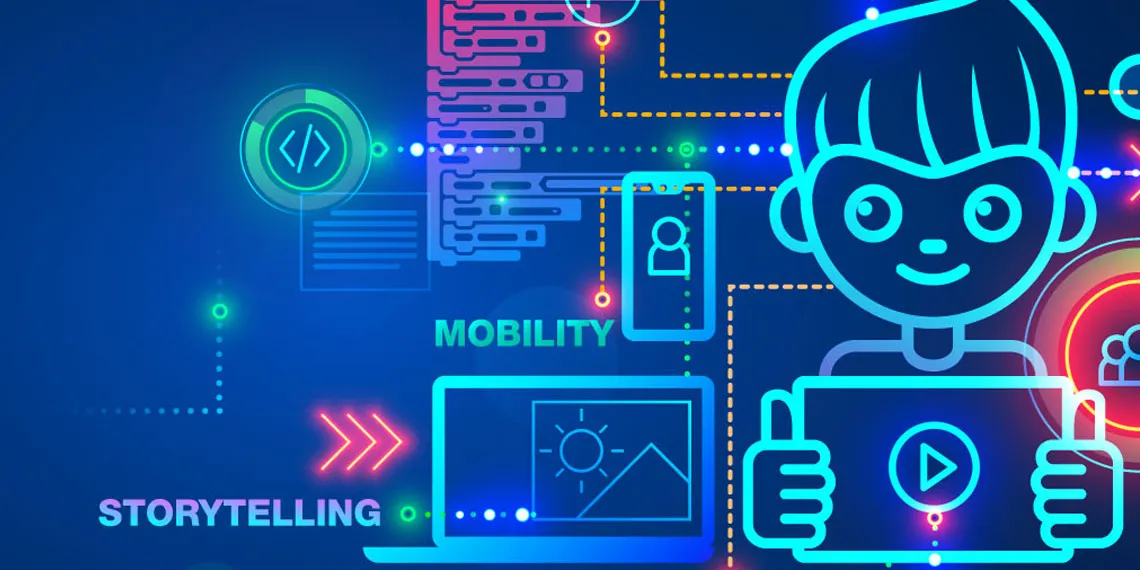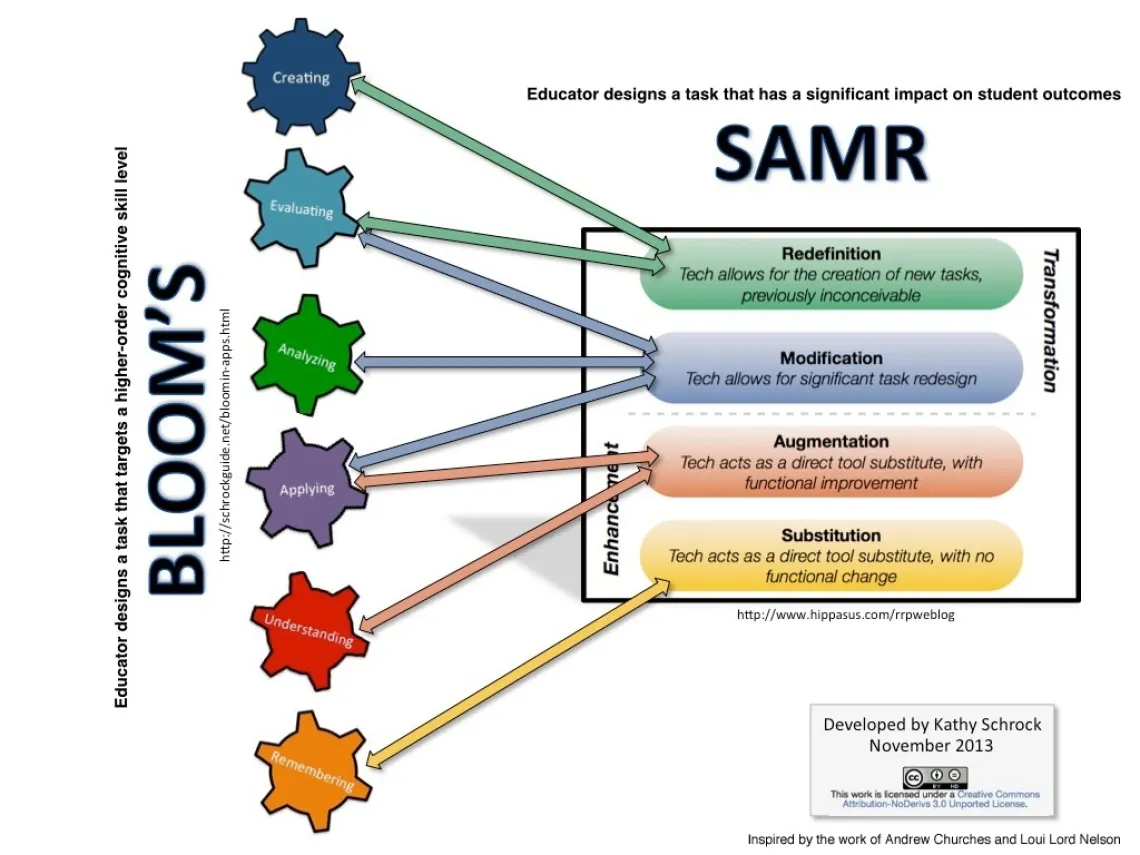SAMR and Quintet: Essential tools for effective technology integration
The SAMR model and Quintet provide a robust framework for enhancing your course through innovative technology integration and application.

So what is the SAMR model?
When working with the integration of technology and learning, one place to begin is looking at how technology enhances and extends learning. SAMR, is an educational technology framework developed by Ruben R. Puentedura, Ph.D in 2010, to help educators think about effective technology integration. SAMR is an acronym that describes a range of functions of technology in education: Substitution, Augmentation, Modification, Redefinition.
In Puentedura’s framework, he begins with the idea of Substitution. Substitution in this context simply means using technology as an alternative tool. A simple example would be using word processing instead of writing with a pen and paper, to present information. Substitution means there is no change in task function; a technology replaces another tool.
Next comes Augmentation. Augmentation implies something that is extended or expanded, to improve the learning experience. For instance, you could begin with a chronological list of information and present it as a digital timeline, some type of map, to enhance the information by adding a visual dimension.
These first two parts of the framework are seen as enhancements, not changing the basic function of the information, but improving it with the application of technology.
Moving forward to Modification, the learning task makes a noticeable shift. The key to modification is to introduce interactive elements of technology that reorganize the task. Requiring collaboration or feedback, using a tool such as Google Docs, to complete a task or assignment would be an example of Modification.
Finally, Redefinition, is when the task is ultimately transformed, giving the learner permission to move in new directions and create. One example comes to mind, of an instructor who is teaching Spanish in an international school in Spain and wants to set up a language exchange with a Spanish class in the US using a Padlet format. This task provides a transformational opportunity through cultural exchange, and presents learning opportunities that would not be possible without this application of technology.
The SAMR model refers to Modification and Redefinition as a Transformational process, meaning it actually alters the learning process and potentially the learning outcomes, as a result.
In the diagram below, the SAMR model is aligned with Bloom’s Revised Taxonomy, another great tool when thinking about the cognitive aspects of learning.

The Quintet
To build on SAMR Dr. Puentedura later introduced Quintet. Where SAMR presents the what of technology integration and application, Quintet outlines more about the how, focusing on practices and processes, in these categories: Social - Mobility - Visualization - Storytelling - Gaming.
The Social category is all about social interaction and engagement using media; enabling users to create and share content via social media tools such as blogs, wikis and file sharing.
Mobility allows the user to participate in learning beyond the physical limitations of time and space, and includes accessibility. Zoom is a current example familiar to many people, along with cloud environments (Google, MS 365), augmented reality, and accessibility options such as translators and screen readers.
Visualization takes learning into the visual realm. Word clouds, mind maps, infographics and maps are examples of visualization tools. Representing information in a visual realm, adds a dimension to help clarify and expand on concepts.
Storytelling can be a simple starting point for using Quintet. Journals using tools like Adobe Spark, storyboarding, video creation and podcasting allow the user to create and share their stories in small circles or broadcast them to a wider audience.
Gaming, using some type of technology, has become increasingly popular and finds its way into classrooms and courses in a variety of ways. Gaming has many possible functions, allowing users to apply concepts, practice information and develop problem solving skills, through interaction and feedback. Gaming has very simple and also very complicated options.
The EdTech Quintet - Associated Practices
| Social | Communication, Collaboration, Sharing |
|---|---|
| Mobility | Anytime, Anyplace Learning and Creation |
| Visualization | Making Abstract Concepts Tangible |
| Storytelling | Knowledge Integration and Transmission |
| Gaming | Feedback Loops and Formative Assessment |
With all this information, you might wonder where to begin? Check out, “A Guide to Applying SAMR and Quintet”.
References
Puentedura, Ruben R. “Pragmatic Dreams: New Learning in the Arts and Digital Technology.” Vimeo. TEAL 2021. vimeo.com/516491246. Accessed Nov. 2021.
Puentedura, Ruben R. “SAMR, the EdTech Quintet, and Shared Practices: An Introduction.” Hippasus. Nov. 2018. hippasus.com/rrpweblog/archives/2018/01/SAMRTheEdTechQuintetAndSharedPractices_AnIntroduction.pdf. Accessed Nov. 2021.
Schrock, Kathy. “SAMR Model Musings.” Kathy Schrock’s Kaffeeklatsch. 21 November 2013. blog.kathyschrock.net/2013/11/sarm-model-musings.html. Accessed Nov. 2021


